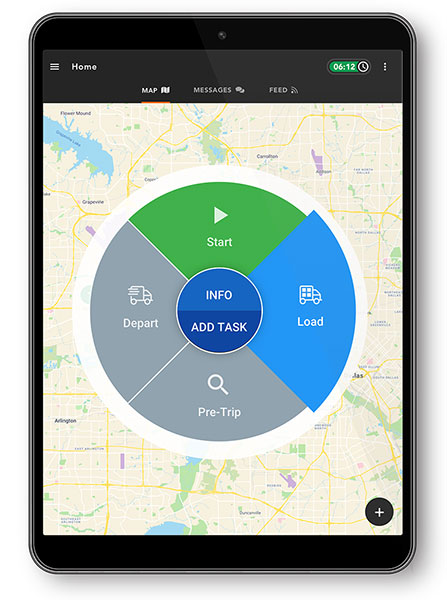The inherent success of the trucking industry relies heavily on the technology that the driver is using. While transportation adopted mobile technology early in comparison to many other industries, today these tools are outdated and ineffective, making the drivers’ job harder instead of easier.
Many companies have significant “technical debt” that’s accumulated over a long period of time that is now creating an impediment for them to make advancements. As a result, there has been very little evolution in mobile approaches for trucking over the past 10 to 12 years. This is a significant obstacle, as outdated mobile technology today not only has negative impacts on the driver, but also the industry as a whole.
The technology that drivers are currently using is far more dated then people realize. Most drivers rely on pen and paper to record key data points, because the mobile technology they currently use does not allow them to access and view historical data. Even fundamental processes have separate applications that cannot interact with each other. As a result, drivers must create written “cheat sheets” in order to record load information that will need to be entered at a later time. Additionally, legacy workflow apps rarely match the real-world driver process, causing drivers to become frustrated, abandon the apps, and switch to texting.

Today, some of the largest over-the-road carriers still communicate the bulk of their information between drivers and the back office via a form of text messaging. Even worse, these legacy systems are not even good at sharing information via text, as the screens in the cab support only 120 to 180 characters.
Tracking data this way makes it virtually impossible for a driver to go back and review everything they previously documented, as scrolling through past messages is time-consuming and tedious. Driver productivity is also hurt by context shifting. Hours of service, load information, pre-trip inspections (DVIRs) and more are all presented as separate applications and processes, forcing drivers to constantly switch in and out of apps and lose their place. It’s no wonder that truckers get frustrated, given the technology that is supposed to be improving their efficiency is only slowing them down.
Outdated technology is one of the leading causes of driver turnover and one of the industry’s most substantial problems. According to the American Trucking Associations, in recent years large fleets lost drivers at an average rate of 89%, while smaller carriers saw a 77% turnover rate. These stats aren’t surprising, given the workarounds and disparate processes required to do the job have diminished overall driver quality of life. Having to work with technological inefficiencies has not only hurt morale, but also reduced driver income due to delays in handling paperwork and unreported detention time.
Modern mobile technology can not only slow this turnover rate by solving for driver frustrations, it can also make the process of training new drivers more seamless. Advanced mobile solutions replace antiquated application grids with a single, unified workflow that runs on many common devices and is more intuitive for drivers. As many drivers already have their own smart mobile device, they are already accustomed to the UX and interface found within these new technologies.
Mobile technology will not solve every issue in the trucking industry, but it will remove unnecessary roadblocks for truck drivers. Mobile upgrades will make drivers more productive because they can access everything needed to complete the job safely and in one place. It will eliminate unnecessary headaches and delays, allowing more time spent on the road, thus increasing their income and overall job satisfaction. As technology continues to advance, management teams should make mobile a bigger priority in order to drive positive change in turnover rates, recruitment and the overall driver experience.
This article was contributed by Gary Blohm, vice president at Omnitracs.













